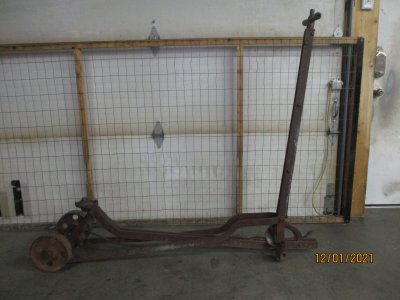A 1922 Model T pickup weighs in at 1,440 lbs, my 2003 Grand Marquis weighs 4,410 lbs on the scale. My 2003 F250 was 6377 lbs on the scale about a month ago. A basic model T car was only around 1,200lbs.
I had a 1922 Buick touring car that weighed in at 2800 lbs, my 1977 Lincoln Continental weighed 4950lbs when weighed on a CAT scale with a half tank of gas.
Our family car when I was growing up was a '56 Ford Fairlane, that car weighed just over 3100 lbs. with I remember having it weighed after taking a load of tin cans to the junkyard back in the day.
Cars in the 1920's were simple and quite primitive, they didn't have all the fancy leather and miles of sheet metal that make up modern cars. They didn't have all the miles of wiring and fancy electronics either. Add in a big V8 engine vs a small tractor like inline 4.
There were no air compressors, no ac, no power steering, no power brakes, many didn't even have brakes on both axles.
You had a simple frame, wood floor, often a partially wooden body, a canvas top, and only basic seats. Your options were limited to double tail lamps, a heater, and maybe a radio and sometimes even an electric starter
It wasn't really until after WWII that cars began to really gain weight, and then it was more limited to the larger more luxury type cars and trucks.
The old Weaver Lo-Way jack that we all used at my first job finally got ruined after some kid they hired tried to lift the front end of his '70 something El Camino with it, when he couldn't muster the strength to pull the handle down, he climbed up on the bumper and put both feet on the handle and proceeded to bend the back of the jack frame. It never worked right again. I think the jack was good to about 1 1/2 ton or so, any more than that you were pushing your luck.


